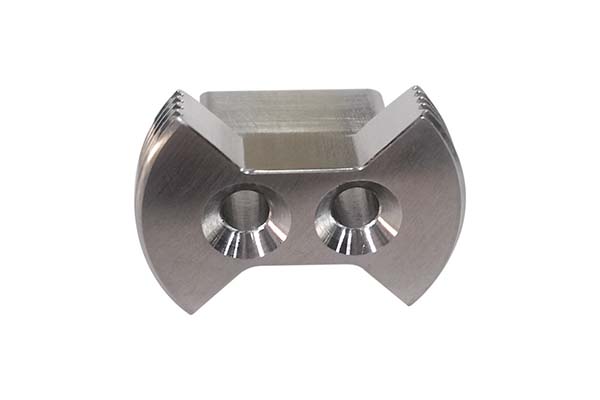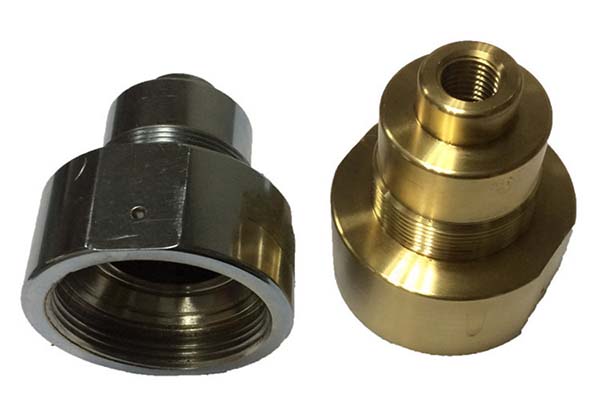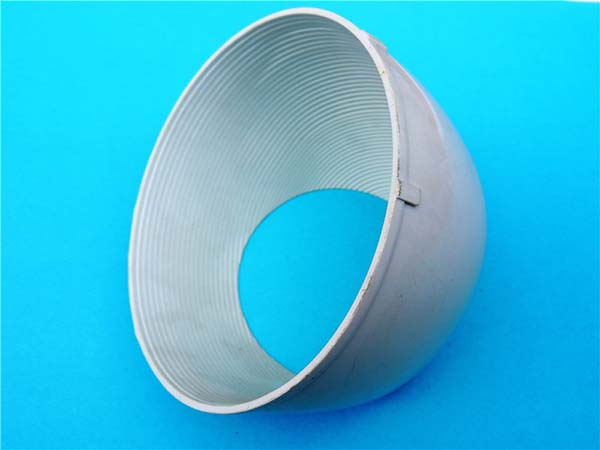If you’ve ever worked with metal, wood, or plastic fabrication, you’ve probably heard of milling—but do you know the different types and when to use each? Whether you’re a hobbyist setting up a home workshop or a professional machinist looking to optimize your processes, understanding the various milling types is key to getting precise, efficient results. In this guide, we’ll break down the five most common milling methods, explain how they work, share real-world examples, and help you choose the right one for your project.
1. Face Milling: Achieving Smooth, Flat Surfaces
Face milling is one of the most widely used milling techniques—and for good reason. Its primary goal is to create a flat, smooth surface on the face of a workpiece (think of squaring off the end of a metal bar or finishing a large plate). Unlike other methods that cut along the edges, face milling targets the top or bottom surface, making it ideal for prepping workpieces for assembly or ensuring tight tolerances.
How It Works
At the heart of face milling is the Face Mill—a large-diameter cutter with multiple Indexable Inserts (replaceable cutting tips) that distribute wear evenly. For extra-smooth finishes, many machinists use a Wiper Insert, a specialized tip that reduces tool marks by “wiping” the surface as it cuts. The Face Width (the width of the cut) and Large Diameter Cutter size determine how much material you can remove in one pass. A technique called High-Efficiency Milling (HEM) takes this further by using high feed rates and shallow depths of cut to boost speed while reducing tool stress.
Real-World Example
Last year, I worked with a small manufacturing shop that was struggling to finish aluminum engine blocks. They were using a old end mill for the top surface, which left rough edges and required extra sanding. We switched to a 4-inch face mill with carbide wiper inserts and adjusted to HEM parameters. The result? Their cycle time dropped by 35%, and the surface finish improved so much that they eliminated the sanding step entirely. The shop saved over 10 hours a week on that project alone—proof that choosing the right face milling setup matters.
Key Facts to Remember
- Surface Finish: Face milling can achieve finishes as smooth as Ra 0.8 μm (32 μin) with the right tools.
- Cutter Size: For most applications, a face mill diameter 1.5–2x the workpiece width is optimal.
- Material Compatibility: Works best with metals (aluminum, steel, stainless steel) but can also be used for plastics and composites.
2. Peripheral Milling (Slab Milling): Cutting Along the Edges
If face milling is for flat surfaces, peripheral milling (often called Slab Milling) is for cutting along the sides of a workpiece. This method uses the peripheral edges of the cutter (not the face) to remove material, making it perfect for creating straight, parallel surfaces or reducing the width/thickness of a part. It’s commonly done on a Horizontal Milling Machine, where the cutter is mounted on an arbor (a long shaft) and spins horizontally.
How It Works
The star tool here is the Slab Mill—a cylindrical cutter with teeth along its outer edge. To reduce vibration and improve cut quality, many slab mills use Helical Cutters (teeth angled like a helix) or Staggered Teeth (teeth offset to alternate sides). The cutter is held in place by an Arbor-Mounted Cutter setup, which keeps it stable at high speeds. A related technique is Side Milling, where the cutter cuts along the side of the workpiece (instead of the top) to create grooves or step features.
Real-World Example
A furniture maker I consulted had a problem: they needed to trim large oak boards to a consistent thickness for table tops. Using a table saw was causing splintering, and hand planing was too slow. We set up a horizontal mill with a 6-inch helical slab mill and adjusted the feed rate to match oak’s density. The helical teeth pulled the wood through smoothly, eliminating splinters, and the arbor mount kept the cutter aligned perfectly. The maker went from trimming 10 boards an hour to 30—all with a uniform thickness that made assembly a breeze.
Peripheral vs. Face Milling: Quick Comparison
To help you tell the two apart, here’s a simple breakdown:
| Feature | Peripheral Milling (Slab Milling) | Face Milling |
| Cutter Use | Uses peripheral edges of the cutter | Uses face of the cutter |
| Primary Surface | Sides or edges of the workpiece | Top/bottom face of the workpiece |
| Machine Type | Mostly horizontal mills | Vertical or horizontal mills |
| Best For | Reducing width/thickness, straight edges | Flat, smooth finishes, squaring stock |
| Vibration Risk | Lower (helical/staggered teeth) | Higher (large diameter cutters) |
3. End Milling: The Most Versatile Milling Type
End milling is the Swiss Army knife of milling—it can do it all. Unlike face or peripheral milling, which focus on one surface, End Milling uses an End Mill (a cutter with teeth on both the end and sides) to perform a wide range of tasks. From cutting slots to shaping complex profiles, this method is a staple in almost every workshop.
How It Works
End mills are designed for versatility. Here are the most common tasks they handle:
- Slotting: Cutting straight grooves all the way through a workpiece (e.g., creating a slot for a bolt).
- Profiling: Shaping the outer edge of a part (e.g., making a curved bracket).
- Contouring: Cutting 3D shapes (e.g., a mold for a plastic part).
- Pocketing: Cutting a recess into a workpiece (e.g., a hole for a nut that doesn’t go all the way through).
- Keyway Cutting: Creating a small slot (keyway) to lock a shaft and gear together.
- Shoulder Milling: Cutting a step (shoulder) into a workpiece (e.g., a bolt with a thicker head and thinner shaft).
- Plunge Milling: Drilling straight down into a workpiece to start a cut (great for deep pockets).
- Trochoidal Milling: A high-efficiency technique where the cutter moves in a circular pattern to cut slots—reduces heat and tool wear.
Real-World Example
A friend who builds custom drones needed to create a lightweight frame from carbon fiber-reinforced plastic (CFRP). The frame had tiny pockets, thin walls, and curved edges—all things that would be hard to cut with other methods. We used a 1/8-inch carbide end mill with a 4-flute design (for smooth cuts in CFRP) and programmed the mill to use trochoidal milling for the pockets. The end mill handled the curves and thin walls without breaking, and the trochoidal path kept the tool cool enough to avoid melting the plastic. The final frame was strong, lightweight, and exactly what he needed.
Key Tips for End Milling Success
- Flute Count: Use 2-flute end mills for plastics (faster chip evacuation) and 4-flute for metals (smoother finishes).
- Depth of Cut: For trochoidal milling, keep the depth of cut to 1–2x the cutter diameter to avoid tool breakage.
- Material Considerations: CFRP and other composites require sharp, carbide end mills—dull tools will fray the fibers.
4. Form Milling: Shaping Complex Contours
When you need a workpiece with a unique, non-flat shape—like a gear tooth or a cam—form milling is the way to go. Form Milling uses a Form Cutter, a tool with a custom shape that matches the contour you want to create. Instead of cutting step-by-step, the form cutter shapes the workpiece in one pass, making it ideal for complex geometries that would be time-consuming to machine with other methods.
How It Works
The magic of form milling is in the cutter. A Form Cutter is ground or manufactured to have a specific profile—for example, the curved shape of a Cam Profile (used in engines to open and close valves) or the notched shape of Gear Teeth. It can also create Concave & Convex Shapes (like a bowl or a dome) or precise Radius Cutting (rounded edges). In some cases, Template Milling is used—where a template guides the cutter to ensure consistency across multiple workpieces.
Real-World Example
A small automotive parts shop needed to replace a worn-out camshaft for a vintage car. Since the camshaft was no longer in production, they couldn’t buy a new one—so they decided to machine it from scratch. They used a form cutter with the exact cam profile (measured from the old camshaft) and set up the mill to make a single pass along the shaft. The form cutter replicated the cam’s curves perfectly, and the final camshaft worked just like the original. Without form milling, this project would have taken days of careful profiling—instead, it was done in a few hours.
When to Choose Form Milling
- You need to create complex contours that can’t be achieved with standard cutters.
- You’re producing multiple identical parts (form milling ensures consistency).
- You need tight tolerances (form cutters can hold tolerances as tight as ±0.001 inches).
5. Angular Milling: Cutting Inclined Surfaces
Not all workpieces have flat, straight surfaces—sometimes you need an angle. Angular Milling is used to create Inclined Surfaces (surfaces that aren’t parallel or perpendicular to the workpiece’s base) or features like chamfers (beveled edges) and dovetails (interlocking shapes). It’s a go-to method for parts that need to fit together at an angle, like brackets or gears.
How It Works
The core tool here is the Angular Cutter, a cutter with teeth ground at a specific angle (e.g., 45°, 60°). There are two main types:
- Single-Angle Milling: Uses a cutter with one angled face—great for chamfers (beveling the edge of a part to prevent sharp corners).
- Double-Angle Milling: Uses a cutter with two angled faces—perfect for Dovetail Cutting (creating a shape like a dove’s tail that locks into another part) or Bevel Gears (gears that transmit power at an angle).
To keep the workpiece stable, V-Blocks (V-shaped clamps) are often used—they hold round or irregularly shaped parts in place while the cutter works.
Real-World Example
A bike repair shop wanted to make custom brake brackets for a vintage motorcycle. The brackets needed a 30° angle to fit the bike’s frame, and the edges needed chamfers to avoid sharp points. We used a single-angle cutter (30°) to mill the inclined surface and a smaller 45° cutter for the chamfers. We clamped the bracket in a V-block to keep it from moving, and the result was a bracket that fit perfectly—no gaps, no adjustments needed. The shop now uses this setup to make brackets for other vintage bikes, saving them money on hard-to-find parts.
Angular Milling Angles: Common Uses
| Angle | Common Application | Tool Type |
| 30° | Bevel gears, custom brackets | Single/Double-Angle Cutter |
| 45° | Chamfers, decorative edges | Single-Angle Cutter |
| 60° | Dovetails, threaded grooves | Double-Angle Cutter |
| 90° | Square notches, V-grooves | Double-Angle Cutter |
Yigu Technology’s Perspective on Milling Types
At Yigu Technology, we believe that choosing the right milling type is about balancing precision, efficiency, and cost. In our experience, many manufacturers overlook the small details—like using a wiper insert for face milling or trochoidal paths for end milling—that can make a big difference in quality and productivity. We’ve seen shops reduce cycle times by 20–40% just by switching to the right milling method for their material and part design. For beginners, we recommend starting with end milling (versatile) and face milling (easy to master) before moving to more complex methods like form or angular milling. As technology advances, we’re also seeing more integration of CNC (computer numerical control) with these milling types—allowing for even tighter tolerances and faster production. Ultimately, the best milling type is the one that fits your specific project needs—and with the right knowledge, you can make that choice with confidence.
FAQ: Common Questions About Milling Types
Q1: What’s the difference between end milling and face milling?
A1: End milling uses an end mill (teeth on end and sides) for versatile tasks like slotting, profiling, and pocketing. Face milling uses a face mill (teeth on the face) to create flat, smooth surfaces on the top/bottom of a workpiece. End milling is for shaping, while face milling is for finishing.
Q2: Can I use a face mill for peripheral milling?
A2: Technically, yes—but it’s not recommended. Face mills are designed for cutting on their face, not their peripheral edges. Using a face mill for peripheral milling will lead to poor surface finish, increased tool wear, and higher vibration. Stick to slab mills (peripheral milling) or end mills (side milling) for edge cuts.
Q3: What’s the best milling type for plastics?
A3: End milling is the best choice for plastics. Use a 2-flute end mill (for better chip evacuation—plastics tend to melt if chips get stuck) and lower cutting speeds (to avoid heat buildup). Face milling can also work for flat surfaces, but use a wiper insert to prevent melting.
Q4: How do I choose between single-angle and double-angle cutters?
A4: Use a single-angle cutter if you need to create a single inclined surface (e.g., a chamfer). Use a double-angle cutter if you need two intersecting inclined surfaces (e.g., a dovetail or a V-groove). The angle of the cutter should match the angle of the surface you want to create.
Q5: Is high-efficiency milling (HEM) suitable for all materials?
A5: HEM works best with metals like aluminum, steel, and stainless steel—its high feed rates and shallow cuts reduce tool stress and heat. It’s less ideal for brittle materials like cast iron or ceramics, which can crack under the high feed rates. For plastics, HEM can work but requires lower speeds to avoid melting.







